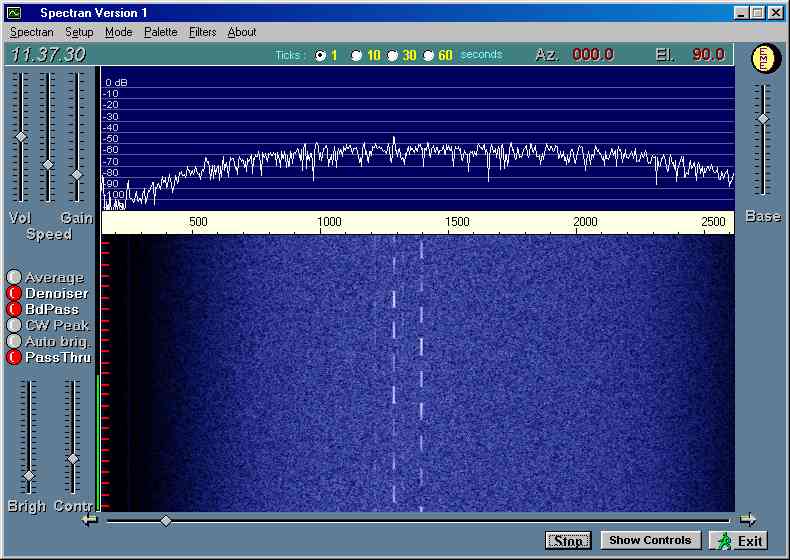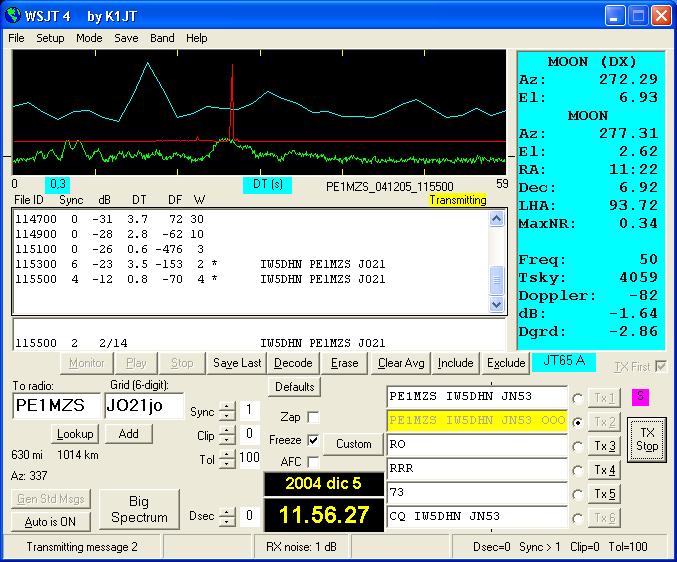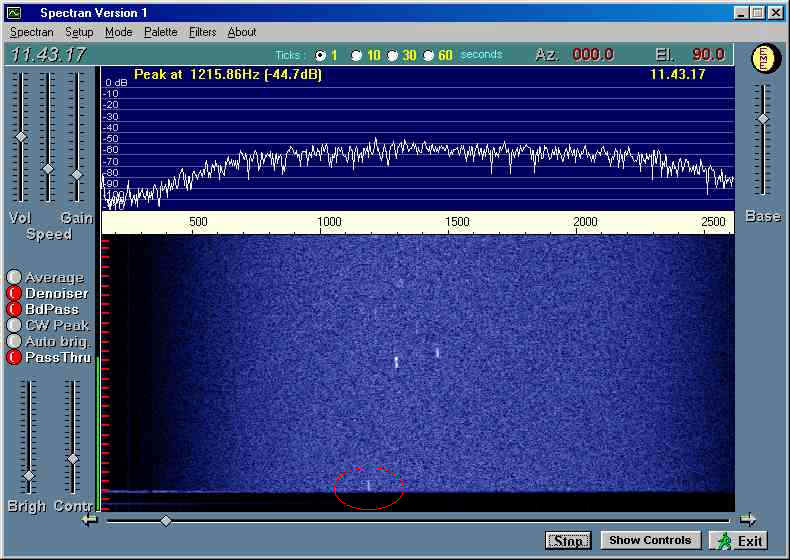Advantages
using a second computer on line and tips to discriminate EME and TERRESTRIAL
signals
I found really amazing and useful using a second PC on line while I'm looking for weak signals coming off the Moon.
WSJT, infact, doesn't permit to monitor in real time the spectrum of the QRG, so it is impossible to detect the weak traces of the other station while he is calling. New version 4.7.0 can handle the new realease 2.0 of Spectran, but the software needs a very powerful PC and, in spite of this, I noticed some problem with time synchrony.
Usually it is possible to realize that a signal is coming out from noise as soon as it happens, while WSJT is still recording the audio file which will be analized later, just at the end of the rx period.
This is really interesting and useful for CW QSO also, because you can see where the other station is calling and you can adjust your DSP filter and VFO to extract only the desired signals from noise.
But I only recently discovered another really interesting use of Specran running on second computer: during a sked with a station far-off less than 4.000 km from your QTH, you can monitor the signal to discriminate in real time that one coming off the Moon from other coming via iono or tropo.
During a sked with F6FHP I received him both via EME and ES terrestrial, but I immediatly realized which was the good signal using Spectran (the two weaker parallel traces on the left, in this case).

Joel F6FHP was sending RRR and using Spectran I have been able to freeze the right frequency and to set the proper tolerance on JT65b to decode the correct EME tones.

WSJT can helps you a lot also, expecially when you are waiting for calls or OOO. The following picture shows a screenshot taken during a sked with Jasper PE1MZS (using single six elements yagi) and you can clearly notice, looking at the DT and DF values, that the first string was coming off the Moon (DT= 3.5 seconds and DF= -153), while the second was coming via terrestrial (DT= 0.8 seconds and DF= -70).

But monitoring with Spectran is useful to check the EME propagation also, if you are running a sked using a simplex frequency (it doesn't work, infact, during split operation).
At the end of every tx sequence, infact, as soon as Spectran starts to receive, you can see your own echo coming off the Moon if condition is fine.

The following picture is very interesting: during a sked with EA3AXV I experimented three different kind of propagation: Meteor scatter, Tropo and ES at the same time! I think that's one of the most unusual situation I ever came across during my EME activity on 50 Mhz.

From left to right you can find EME signal, Tropo signal and MS burst. EA3AXV was sending RO. Notice the strong frequency difference between the EME and Tropo traces due to the Doppler effect, while the frequency shift between Tropo and MS signals is quite marginal.